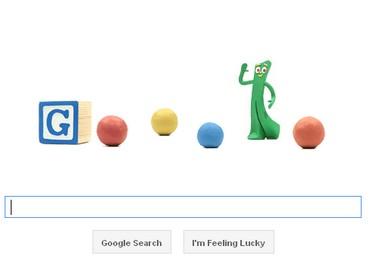 | « Back to article | Print this article |
 With its latest creation, Google is celebrating the birth anniversary of the pioneer of stop motion clay animation.
With its latest creation, Google is celebrating the birth anniversary of the pioneer of stop motion clay animation.
Google's home page today shows a set of five coloured balls that pop up to assume the form of animated clay characters.
With this latest doodle, the search engine celebrates the 90th birth anniversary of stop motion clay animator Arthus (Art) Clokey.
Born in Detriot, USA on October 12, 1921, Clokey was a pioneer of stop motion clay animation, a technique he first used to experiment with in a series of short clay animation movies including a three-minute short called Gumbasia back in 1953.
Out of Gumbasia would be born Gumby, the famous character that would be associated with Clokey through his life.
The short films eventually led to The Gumby Show, which was a hit among audiences in the 50s and 60s.
Gumby's name is said to be inspired by Clokey's childhood experiences of visiting his grandfather's farm, where he first enjoyed playing with clay and mud mixture, which was also called 'gumbo'.
Clokey and his first wife, Ruth are also famous for their creation of the Davey and Goliath series, which was produced as a television series in 1960.
His clay models featuring animated objects, animals and people were not only the first of its kind to be seen in television commercials, but Clokey is also remembered for being the first to use them in full length feature films. Needless to say, the artist was loved among young kids and adults alike through his characters.
Art Clokey died due to a bladder infection at the age of 88 on January 8, 2010 at his home in California.
Google doodles have become immensely popular over the years with the search engine celebrating major festivals and anniversaries every other day. Some of these doodles like the recent one featured on Freddie Mercury's birthday are animated videos, others like the one for Les Paul's birthday are interactive while most others like the one for Jorge Luis Borges are plain images.